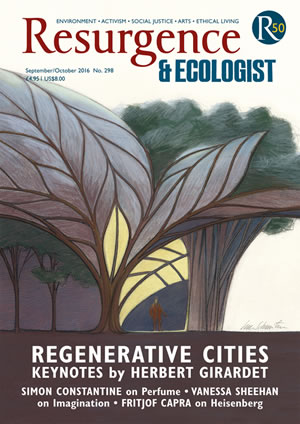When David Hare first travelled to Paris as a teenager, in 1983, he carried with him a basic map of the French capital, a packet of cigarettes, a tube of peppermints and £400 he had saved from working as a hotel barman in his home town of Peterborough. After a brief stint in a travellers’ hotel in the Latin Quarter, he and a friend took up lodgings in the home of a kindly landlady who was given to taking in waifs and strays.
The two young travellers were aware that their landlady was Buddhist, and they spent many hours debating religion with her. But Hare remained “profoundly sceptical” at her assertion that the answers to age-old questions such as “What’s it all about?” and “Why am I here?” lay within. When fellow Buddhists would turn up at the apartment, he would head off to the peace of the local park to escape the noise of them chanting together in front of a “strange altar with a scroll in it”, which their landlady kept in her living room.
More than 30 years later, after first working in business and then training as a life coach, Hare has written a book chronicling how his initial scepticism of the form of Nichiren Buddhism his landlady practised gradually changed as the tradition came to inform every aspect of his personal and professional life.
The Nichiren Buddhist tradition Hare came to embrace was founded by a revolutionary Japanese monk called Nichiren Daishonin, persecuted in 13th-century Japan for his belief that the three main qualities of Buddhahood – innate wisdom, courage and compassion – were not some distant aspiration, but were inherent within each moment of life.
Unlike Zen Buddhism, which teaches that enlightenment can be manifested through zazen sitting meditation, Nichiren insisted that enlightenment could only be achieved through the repetitive chanting of Nam Myōhō Renge Kyō, the classical Japanese title of one of Buddhism’s most influential teachings, the Lotus Sutra.
Nichiren encouraged followers to set practical goals and then chant to achieve them as a way of testing whether the practice works. This led some to perceive the practice as materialistic. But from a Nichiren Buddhist perspective desires and attachments are seen as something to be transformed rather than eliminated.
As with many Buddhist traditions, Nichiren Buddhism eventually became fraught with internecine conflict. Hare’s book, however, focuses on the teachings of the school within this tradition now followed by the global lay organisation Soka Gakkai International (SGI) and its more than 10 million devotees around the world.
Hare’s aim, he explains, is “to give non-Buddhists some bite-size chunks of practical wisdom and advice to use amidst the realities of everyday life”. As befits his training as a life coach, The Buddha in Me, the Buddha in You includes various lists of suggested “journal exercises”. These include working out how many days the reader has lived so far, with the exhortation that, given an average lifespan of 76 years (or around 28,000 days), each day be treasured as precious.
Unlike other traditions, Nichiren Buddhism tends towards proselytising. But Hare adopts a light approach. “Whether or not you practise Buddhism,” he concludes, “have the courage to be true to yourself… Win over your struggles and, through your victories, encourage others to do the same. Have no regrets on your passing from this existence. Treasure every moment.”
Counting how many days we might have left to live could be a powerful incentive towards achieving this.








